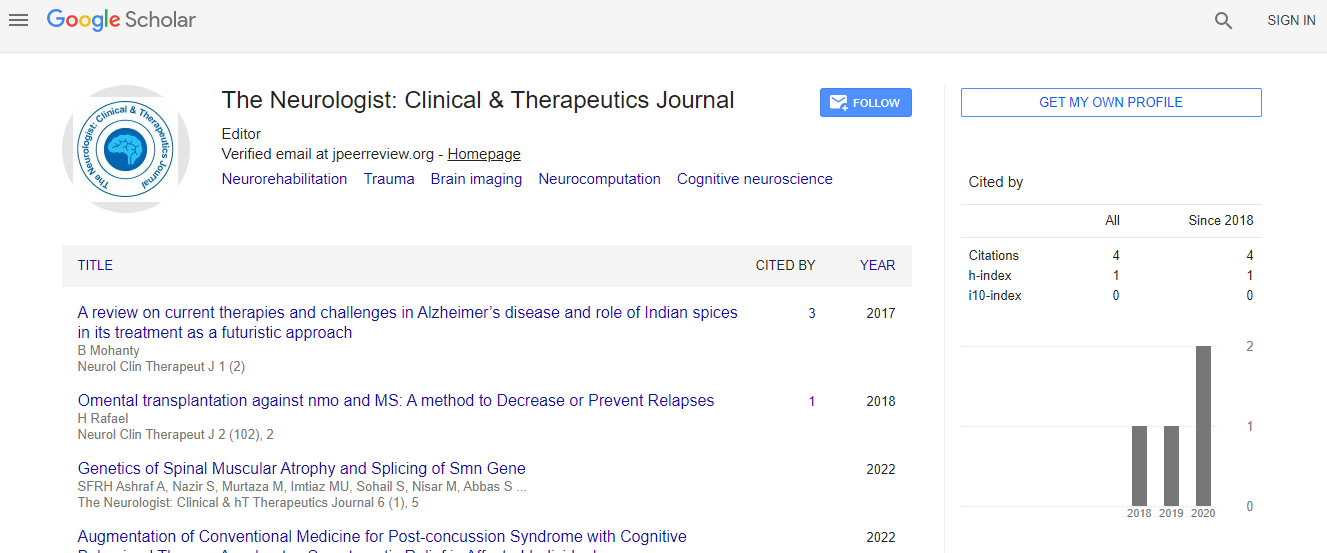Mechanisms and Implications of Protein Aggregation Spread in Neurodegenerative Disorders
*Corresponding Author: Bemair Tobey, Department of Neurology, Georgetown University, USA, Email: tbemair@gmail.comReceived Date: Sep 03, 2024 / Published Date: Sep 30, 2024
Citation: Bemair T (2024) Mechanisms and Implications of Protein AggregationSpread in Neurodegenerative Disorders. Neurol Clin Therapeut J 8: 224.
Copyright: © 2024 Bemair T. This is an open-access article distributed under theterms of the Creative Commons Attribution License, which permits unrestricteduse, distribution, and reproduction in any medium, provided the original author andsource are credited.
Abstract
Neurodegenerative disorders, such as Alzheimer’s disease, Parkinson’s disease, and amyotrophic lateral sclerosis, are characterized by the accumulation and aggregation of misfiled proteins. This review delves into the mechanisms underlying the propagation of protein aggregates within the nervous system and their implications for disease progression. We explore the roles of cellular processes such as protein misfiling, impaired degradation pathways, and intercellular transmission of aggregates. Additionally, the contribution of genetic and environmental factors to protein aggregation is examined. By understanding these mechanisms, we aim to elucidate the complex interplay between protein aggregation and neurodegeneration. The review also highlights potential therapeutic strategies targeting these pathways to mitigate the spread of protein aggregates, offering new avenues for intervention in these debilitating disorders. Our synthesis of current research underscores the need for continued investigation into the molecular underpinnings of protein aggregation to develop effective treatments and improve patient outcomes.

 Spanish
Spanish  Chinese
Chinese  Russian
Russian  German
German  French
French  Japanese
Japanese  Portuguese
Portuguese  Hindi
Hindi 